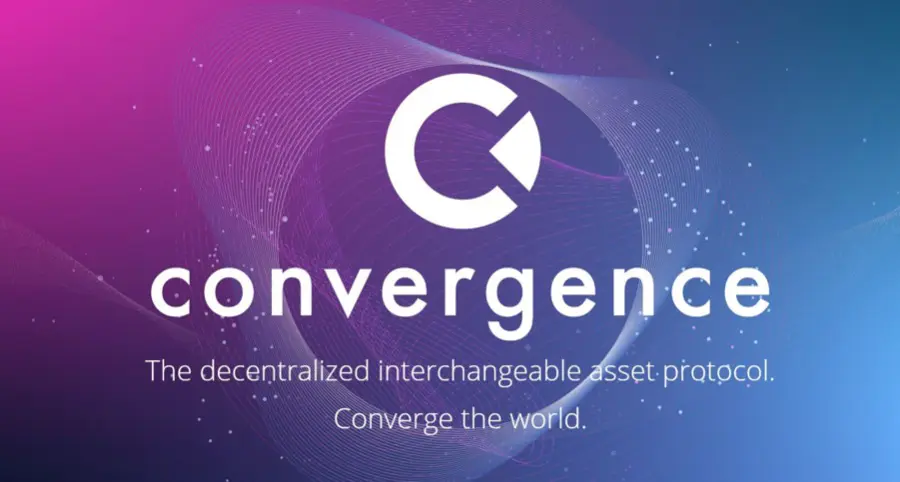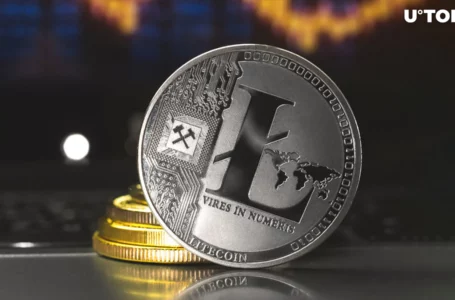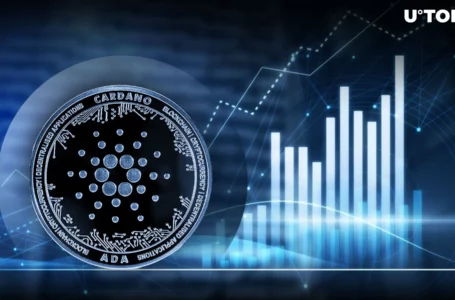
Convergence Finance deems itself as a decentralised, interchangeable asset protocol with the goal of converging legacy finance with DeFi. As the relationship between traditional finance and Decentralized Finance grows increasingly closer, Convergence seeks to pioneer the untapped space at the crossroads between Security Tokens and Utility Tokens, and provide a more democratic approach to investing through asset tokenisation.
While Ethereum brought decentralised trading, lending and yield earning to anyone with an internet connection, while also ensuring protocol transparency and interoperability, Convergence aims to disrupt the boundaries separating the siloed illiquidity of Security Tokens and the highly liquid environment of DeFi Utility Tokens.
To achieve this, Convergence has designed a proprietary token wrapping module that essentially converts standardised Security Tokens into Wrapped Security Tokens (WSTs), opening up a plethora of exciting opportunities in the DeFi space. In addition to WSTs, the Convergence protocol will also provide AMM infrastructure, Liquidity Pools and its own native Decentralised Autonomous Organisation (DAO) architecture.
Ultimately, Convergence strives to be the first project to make real world asset exposure interchangeable in the DeFi ecosystem by connecting Wrapped Security Tokens (WSTs) with Utility Tokens in a one-stop, easy-to-use interface that is composable with other DeFi protocols.
Security Tokens VS Utility Tokens
Before diving into the project’s architecture and functionality, it is productive to briefly discuss the role played by security tokens and utility tokens in both the traditional and crypto markets.
When Bitcoin first emerged in 2009, cryptocurrency was nothing but an alternative, perhaps more avant-garde version of currency itself. At present, the term ‘cryptocurrency’ is used as an ultimate generalisation of the vast use cases, utilities and propositions that blockchain-based projects and their respective tokens have to offer. Thus, it is no longer conceivable to define ‘cryptocurrency’ as a single entity spearheaded by one, leading digital currency.
While Bitcoin maximalists will no doubt disagree with this statement, the rise of Initial Coin Offerings (ICOs), and of their sisters IDOs and IEOs, has led to a generation of thousands of different cryptocurrencies and has contributed to the dynamic, value-rich digital asset ecosystem that we know today. These ICO-generated coins are commonly referred to as ‘tokens’ and, in the majority of cases, they represent the Utility Tokens of a specific blockchain project.
Utility Tokens are digital assets issued by a business, tech start-up or blockchain-based project to fund development and infrastructure, and they can be later used to purchase a good or service offered by the issuer of the asset itself.
When a project raises capital at ICO level, it offers investors its utility tokens in exchange for other crypto assets or fiat currencies that will serve for the project’s final development. This, coupled with the fact that the majority of ICOs occur on the Ethereum Network, inherently enriches Utility Tokens with some of the best liquidity in the space and makes DeFi the ultimate hub for UTs.
Security Tokens (STs)
Then come Security Tokens. As their name suggests, Security Tokens are a type of digital asset that is backed by a registered security or physical asset, such as a stock, bond, derivative or real estate. These tokens represent ownership rights of the underlying asset and can often be traded on public or private exchange platforms.
Since these tokens generally represent registered securities, they are typically only sold to accredited investors, who can then sell or trade them with other accredited investors. However, some can be re-sold to non-accredited investors and have no restrictions on who can buy, sell or trade them.
There are three primary types of traditional securities: equities, debt and a hybrid of equity and debt. Examples of securities include stocks, ETFs, futures and options. Hypothetically speaking, any of these securities can be tokenised to become a security token and, for this very reason, it is rather likely that tokenised securities will come to rival traditional securities and stocks in the near future.
It is furthermore important to note that STs do not possess the same characteristics as Bitcoin, Ethereum or Litecoin, for instance, as these crypto assets run on their own individual blockchains, whereas STs could potentially run on existing blockchains such as Ethereum via the ERC-20 standard. In addition, security token holders can benefit from the performance of the token itself and, at times, can also earn profit through dividends in the form of additional tokens. Overall, this allows ST holders to access the same benefits offered by stocks and other securities, while also engaging in the novel infrastructure of DeFi.
The Problem With Security Tokens
Over the last several years, blockchain technology has brought life to a vibrant decentralised ecosystem made up of a variety of different tokens, including Security Tokens, Utility Tokens and Non-Fungible Tokens. These assets, however, have remained for the most part isolated and siloed in their own environments.
UTs, for instance, have been restricted to permissionless, crypto-native financial protocols, whereas STs seem to appeal to financial institutions with a focus on private capital market innovation, equity crowdfunding and an emphasis on ownership.
While the tokenisation market is expected to grow considerably over the course of the next few years, Security Tokens currently suffer from major illiquidity issues as well as a general lack of scalable distribution and composability.
Indeed, Security Token issuers are struggling to fundraise more efficiently than before because the overall demand for STs still remains pretty low from an investment perspective. Additionally, the complex legal structures required specifically for Security Token Offerings (STOs) generate a barrier of entry that is perhaps too high for issuers to tokenise their assets and distribute them.
Then comes the greatly dreaded illiquidity issue. In fact, the liquidity of STs is considerably lower on secondary markets compared to that of Utility Tokens and completely lags behind UT liquidity on DeFi DEXes, especially in terms of trading volume.
Convergence’s Wrapped Security Tokens (WSTs)
Convergence seeks to deliver a protocol that allows users to easily exchange their regular utility tokens for Wrapped Security Tokens (WSTs) in a highly liquid, trustless environment. These WSTs are a Convergence-native token design and represent an entirely new type of token that will be traded across the Convergence ecosystem, through its AMM infrastructure and other liquidity pools.
WSTs forward a truly innovative value proposition as they allow regular investors to gain access to investment opportunities that are typically only open to accredited investors and Venture Capital Firms. In fact, due to the many rules imposed by financial regulators and the often high barrier of entry into asset classes at early stage, some investment opportunities remain quite simply off-limits for the majority of individual investors.
DeFi, however, is set to completely change all of this as it offers an open, permissionless and disintermediated financial ecosystem that removes the hurdles limiting early-stage investing to only a handful of investors and effectively allows anyone to participate.
Convergence’s Wrapped Security Tokens are built with tied-in economic exposure, as their token wrapping module ensures from both an on-chain and off-chain perspective that economic benefits will be transferred to WST holders via the Convergence DAO. What this essentially means is that if users purchase Wrapped Security Tokens for say the SpaceX Initial Public Offering (IPO), they can be sure to receive the benefits and monetise from the proceeds of the company’s IPO.
Convergence Protocol Architecture
As mentioned above, the main architectural elements of the Convergence protocol are:
- The Token Wrapping Module
- The AMM infrastructure
- The Liquidity Pools
- The DAO mechanism
- The Token Wrapping Module
Token Wrapping Module
The Token Wrapping Module allows the project to essentially wrap security tokens and tokenise them within its infrastructure. The wrapping process is very similar to the one currently used in DeFi protocols when Ethereum (ETH) is wrapped into Wrapped Ethereum (WETH) and Bitcoin (BTC) into Wrapped BTC (WBTC). These Wrapped Security Tokens are then injected into the AMM protocol.
Convergence AMM Infrastructure
The Convergence AMM infrastructure is built on Ethereum and its EVM-compatibility allows it to connected with other chains such as MoonBeam and the Binance Smart Chain (BSC), among others. The Convergence AMM enables WST trading at all times as well as real asset price discovery.
The AMM finds the best order routing from aggregated liquidity sources to give traders the best prices. Convergence designed its AMM infrastructure to eliminate complexities and allow ease of access for retail investors, fund managers and crypto-native investors to freely provide liquidity and trade among the pools.
Convergence Pools
Convergence Pools give asset owners the flexibility to easily create and manage their own market making strategies. By creating their own pools, asset owners can launch Initial WST Offerings alongside providing liquidity for further trading for DeFi users. Convergence Liquidity Pools essentially aspire to eliminate complexities and allow ease of access for retail investors, institutions and VC funds around the world to freely provide liquidity and trade among the pools.
Decentralised Autonomous Organisation (DAO)
The main purpose of setting up the Convergence DAO is to provide a greater level of transparency and decentralisation to the protocol. Through the Convergence Decentralised Autonomous Organisation, holders of the native CONV token will enjoy governance rights to vote on various proposals, such as the types of WSTs to be included in the Convergence AMM or utility tokens that can be used to swap certain WSTs.
Through the DAO, Convergence users can ultimately decide if, for instance, the DOGE Utility Token can be swapped for SpaceX IPO WSTs, or if specific ICO tokens can be swapped for say the Tesla (TSLA) stock.
The architectural elements listed above constitute the secret sauce of the Convergence Protocol and will most definitely accompany the project in its quest of making Real World Asset Exposure interchangeable in the highly liquid DeFi space.
Convergence And NFT Fractionalisation
In the past year, NFTs have proven to be an incredibly profitable market and they present investors with a variety of exciting opportunities. However, many investment-grade NFTs often come with a hefty price tag and are by no means affordable assets. This is why breaking down the NFT investment could become a new trend for the digital collectibles market.
Indeed, fractionalising high-priced NFT artworks would allow investors to participate in the higher end of the market which, of course, would bring significantly more upside to the NFT investment overall. By leveraging its token wrapping module, Convergence can fractionalise high-priced NFTs and present them as wrapped tokens, making them tradable on ConvX, Convergence’s AMM infrastructure.
ConvX: Pre-ICO Tokens
Leveraging ConvX infrastructure, Convergence can also provide private-sale tokens of new crypto projects, a field that has been for the most part limited to private investors and crypto VC funds. Data suggests that throughout 2021 VC funds have expressed a growing desire to invest in blockchain projects and crypto assets, however, these private investors are met with some limitations. For instance, when a private equity firm is an early-round investor of a crypto project, the firm would usually receive a block of private-sale tokens, subjected to a lock-up period.
The only way it can sell these tokens before the project is publicly listed is to go through the OTC market, which is far from transparent. On the other hand, investors could potentially leverage Convergence’s ConvX AMM protocol by wrapping their private-sale tokens and placing them in a Convergence liquidity pool. This would, firstly, allow investors to exit their positions earlier and, secondly, would let DeFi users purchase pre-listing tokens at a discounted price and gain private-sale exposure via Convergence.
CONV Token
CONV is an ERC-20 asset and the protocol’s native token. The maximum supply is set at 10,000,000,000 CONV Tokens. In the Convergence ecosystem, CONV serves several functions including:
- Governance Rights
- Split Of Transaction Fee
- Privileged Access
Governance Rights
The CONV token and its holders form a self-governed community that reflects the needs of its members. CONV holders may vote on governance matters such as new assets, listing on exchanges and any liquidity threshold to be maintained.
Split Of Transaction Fee
Liquidity providers will receive a split of the transaction fee in the form of CONV tokens.
Privileged Access
CONV token holders may also receive exclusive participation access to new Initial WST Offerings and pre-sale events.
CONV’s Polkastarter ICO
Convergence enjoyed a very successful launch on Polkastarter on March 25th 2021, with its native CONV token putting in a respectable 55.1x from its IDO price of $0.005. For the IDO, the project raised $300,000 and launched through Polkastarter’s dual POLS and General Pools. Convergence secured long term support from Hashed, Alameda Research, NGC Ventures, CMS, Pantera Capital, Morningstar, Vendetta, GBV and AU21 Capital.
CONV’s price is currently way off its March 2021 highs however, given the solid backing from heavyweight funds in the space and its innovative RWA-DeFi value propositions, the CONV token will most likely recover in the medium to long term outlook.
Team
Convergence Finance has a strong and diversified team to back its development and guarantee its long term success. The project’s team is primarily composed of active employees and co-founders of Liquefy LABS, a blockchain-based entity looking to bring DeFi tokenisation to real asset investments. The presence of Liquefy members and advisors indeed gives Convergence the extra input and expertise required for it to succeed in the highly competitive Decentralised Finance space.
The Convergence Team is composed of:
- Oscar Y. – Co-Founder
- Philip Pang – Chief Commercial Officer And Advisor
- Ivan Yeung – Co-Founder
- Karen Wong – Product Manager
Bottom Line
Convergence is a cutting-edge project that aspires to completely revolutionise and reshape the way users engage with real world and crypto-native asset exposure. The project forwards an alternative approach to decentralised digital asset trading and seeks to break down the boundaries separating the isolated illiquidity of Security Tokens and the ultimately liquid environment of DeFi Utility Tokens.
Convergence furthermore tackles some of the issues characterising the traditional and decentralised financial ecosystems such as the non-democratic nature of early-stage investing and the exclusivity of crypto VC funds at pre-ICO and private-sale levels. With Convergence, TradFi and DeFi can merge to synthesise an ultimately dynamic, flexible and rather unprecedented financial infrastructure that eliminates the previous complexities and facilitates interoperability and cross-asset composability between its in-house WSTs and DeFi UTs.


















